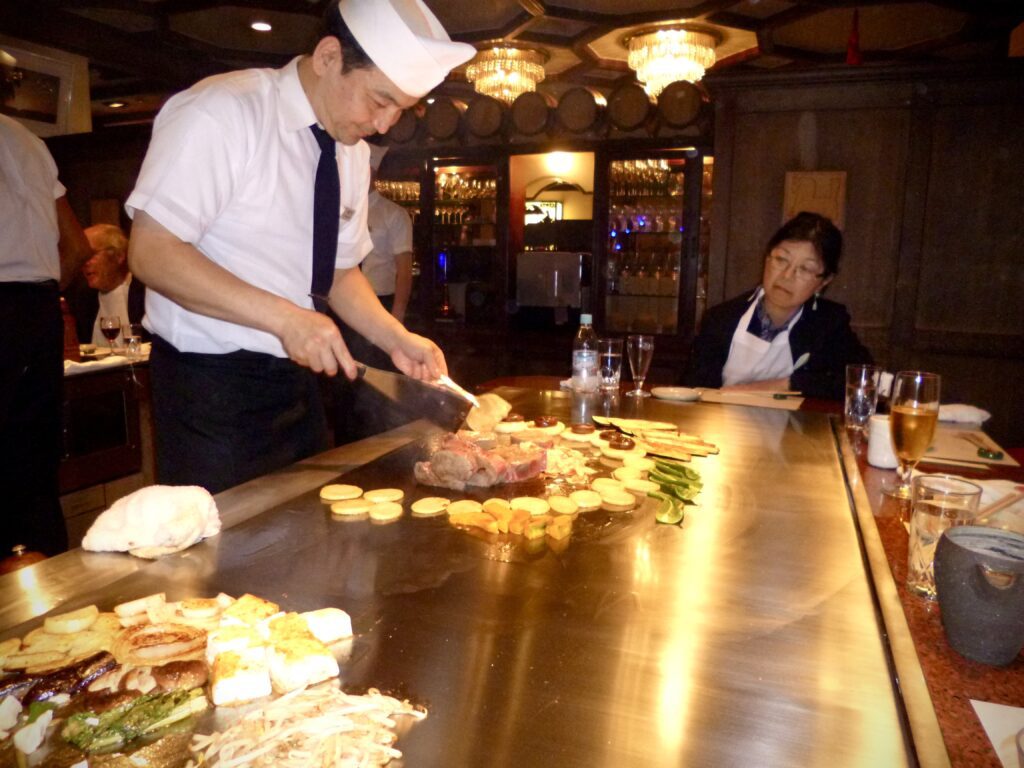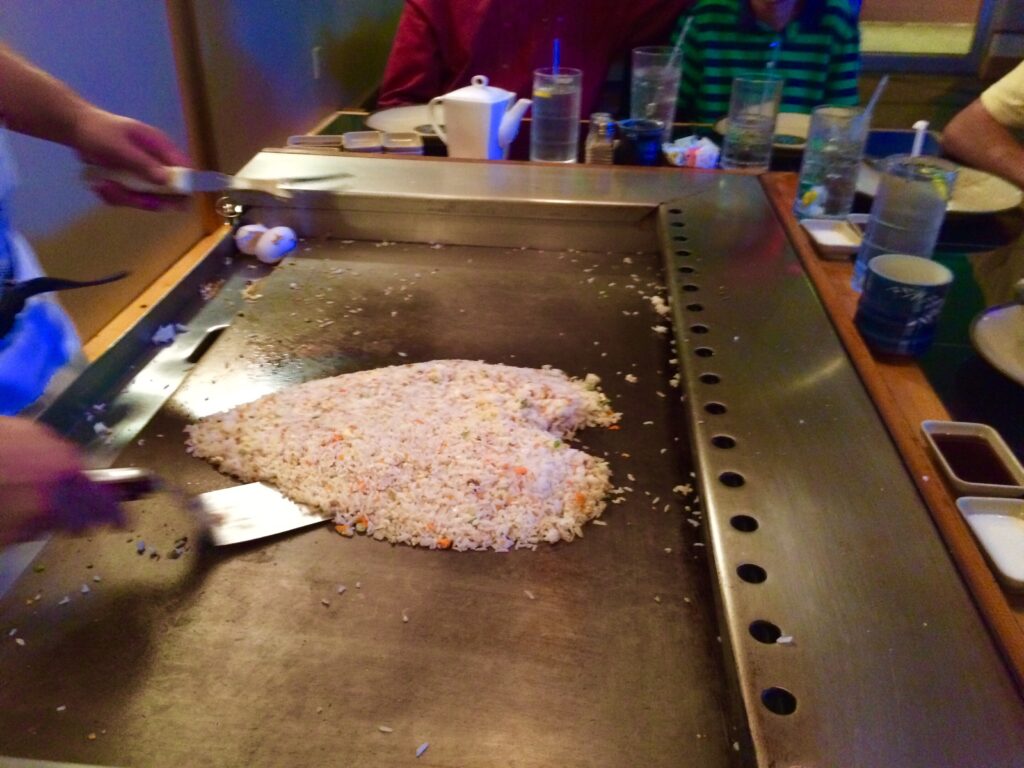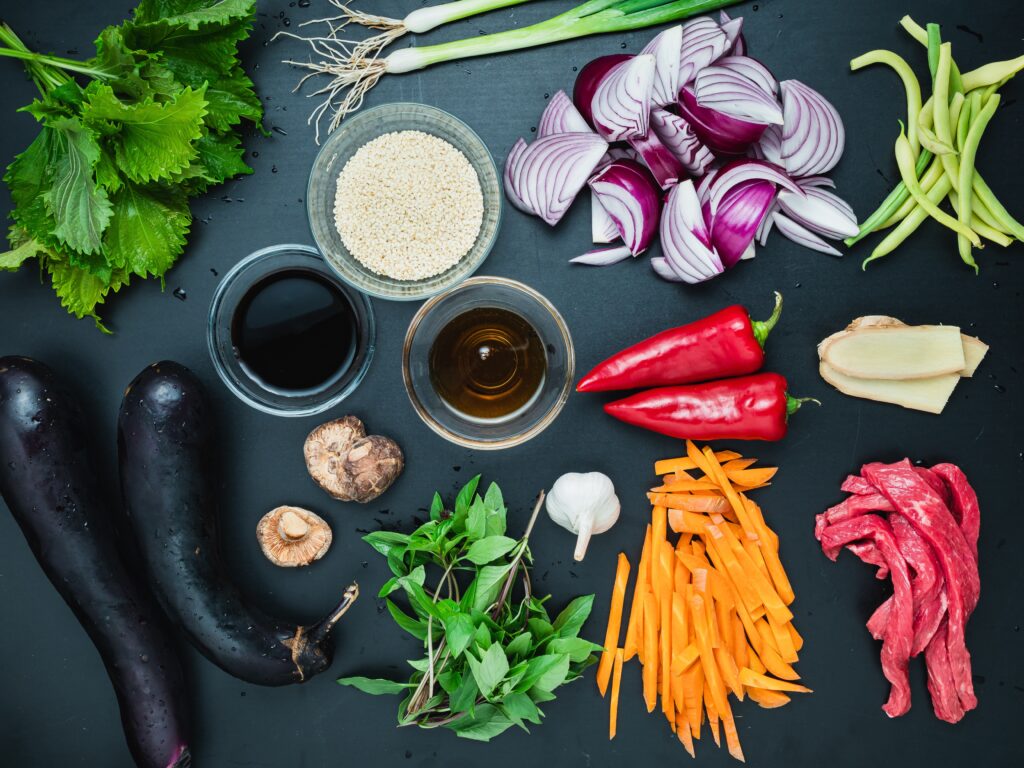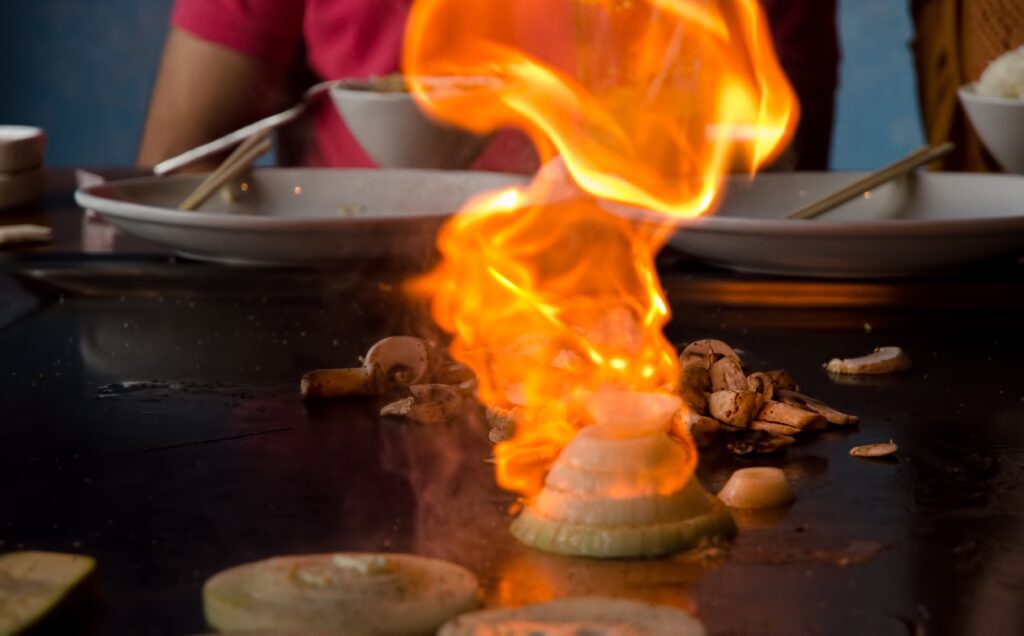Teppanyaki vs Hibachi: What’s the Difference?
You’ve likely heard the term Hibachi and you likely associate it with Japanese food. But what about teppanyaki? You probably feel like you’ve seen it somewhere.
That’s because hibachi and teppanyaki are both from Japanese cuisine. They are popular forms of cooking in the East, but what is the difference?
While some may have you believe that the terms are interchangeable, they are completely different forms of cooking. We will go into
- A brief dive into Teppanyaki
- What is Hibachi Dining exactly
- The difference between the two
So read on and get ready to be very hungry by the end with teppanyaki vs hibachi.
Teppanyaki Dining
Let’s break down each type of dining experience, starting with teppanyaki.
History
Teppanyaki is a combination of two Japanese words: Teppan and Yaki. Teppan means “Iron Plate,” while Yaki means “pan-fried or grilled.”
The practice of Teppanyaki dining was originally done in Japanese homes, but took on a more performative and commercial approach after the end of World War II. Japan had a spike in tourism and teppanyaki dining became a must-see attraction and experience.
It later came to the United States in the 1960’s, starting with the first restaurant in New York City. Since then, the trend has grown and many teppanyaki restaurants have been delighting people with their showmanship and filling bellies with fantastic food.
Cooking Style
The cooking style of teppanyaki includes a large iron plate surrounded by chairs in today’s version. The style of cooking is also very performative and trick-based.
The food cooked teppanyaki style is generally a combination of beef, shrimp, scallops, lobster, chicken and assorted vegetables. Many other foods used are starches like noodles and rice. Occasionally, eggs will also be added.
These foods are traditionally cooked in either soybean oil or soy sauce which help to bring out the dormant flavors in each piece of food.
The Performance of Teppanyaki
As alluded to above, teppanyaki is known for its performance during cooking. There are many tricks that are well known by people that have experienced a teppanyaki dinner. Some include:
- The Onion Volcano
- Shrimp in the Pocket
- The “Egg Roll”
- The Beating Heart
… and many more.
This performance is one of the main reasons people come back to teppanyaki restaurants time and again. It’s dinner and a show!
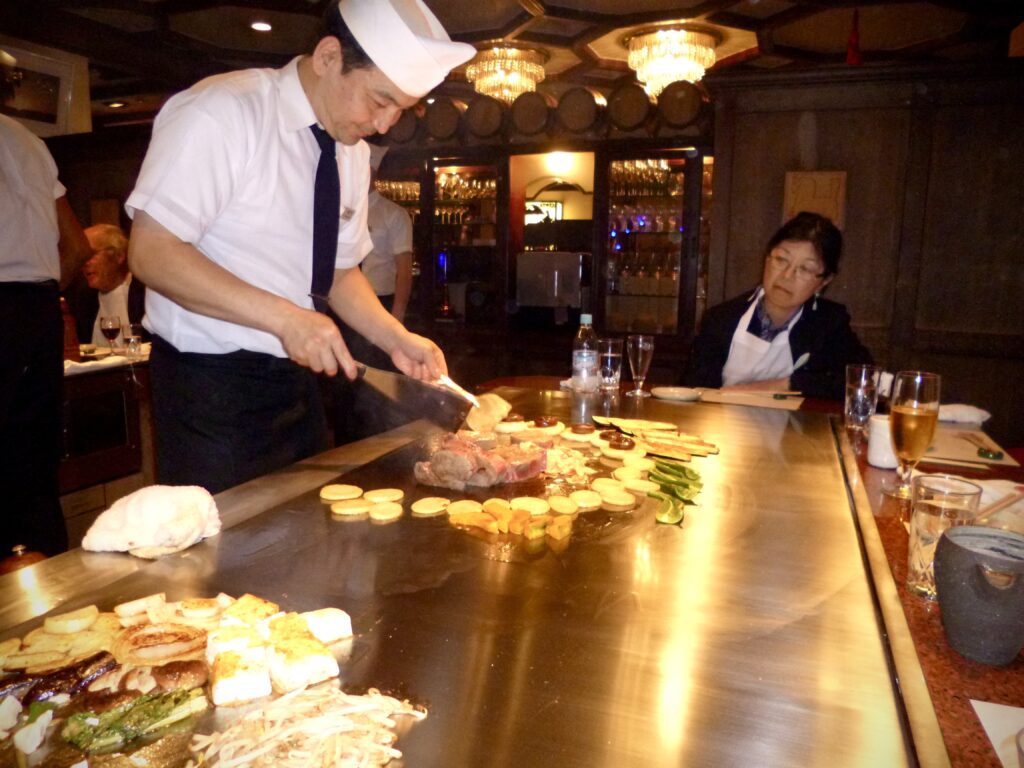
Hibachi Dining
Now for teppanyaki’s counterpart: Hibachi.
History
Hibachi grilling dates back to the Heian period of Japan, between 794 and 1185 AD. The literal translation of the word is “Fire Bowl.”
The name was coined because traditional hibachi cooking was performed in a cylindrical container with wood or charcoal. When the first ones were made, metal was scarce. The original hibachis were made out of clay and the wood of cypress trees. These original hibachi grills were not tied down so they were portable for cooking in the home or outside.
Today, they are almost entirely made of metal. They are also built into furniture like tables or booths at a restaurant. The other major change with modern hibachi is the use of electricity. There is no longer a need for wood or charcoal to cook the food, but many still do.
Americanization of Hibachi
Now you might be thinking, “well that doesn’t sound anything like what I thought hibachi was.”
You’d be right.
Hibachi is much closer to what you would do with grilling on your back porch. Hibachi is not about showmanship like teppanyaki; it is the food.
But when these cooking concepts were brought from Japan to North America, they evolved. Hibachi cooking in western culture became performative. It became an identity for branding with Japanese steakhouses. It emphasized the family seating and performance aspects of both and combined them to create what Americans know as Hibachi today.
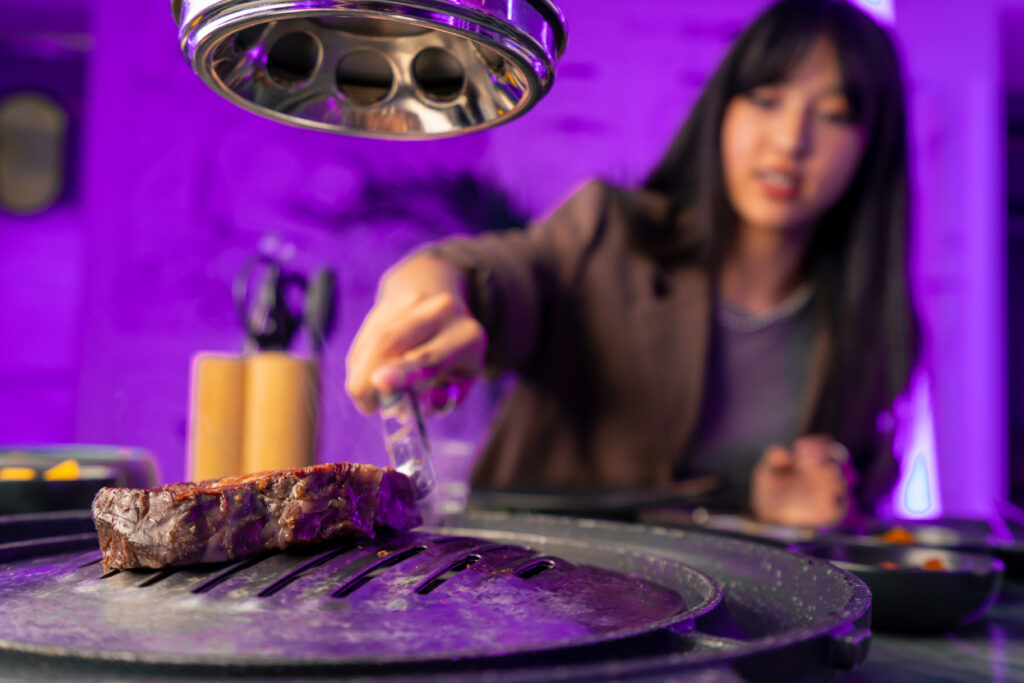
Teppanyaki vs Hibachi Differences?
So what are the real differences between the two versions of Japanese cooking?
Food Preparation
While there is a great deal of overlap between the types of food used in both cooking styles, there is one small difference.
Teppanyaki will normally use finer cuts of meat like steak and certain fish. Hibachi traditionally does not use these cuts as the grills themselves are not best suited for these protein sources.
Grill Style
As discussed earlier, teppanyaki is traditionally cooked on a flat iron slab. The slab is built into the table and is surrounded by multiple chairs for customer seating.
Traditional hibachi is cooked on a grill made by a combination of clay, cypress tree wood, and metal. Most made today opt out of using the wood however. These grills can be built into the table, but were more commonly portable ways of cooking.
Heat Source
Both grills are heated in drastically different ways. For teppanyaki grills, they are heated by either gas or electricity. This is because these grills are normally very large and this allows for even heating across the entire grill.
As for hibachi, they can use electricity, but more often use either wood or coals to cook the food. Cooking this way gives hibachi style food a smokier flavor as opposed to the juiciness of teppanyaki grill.
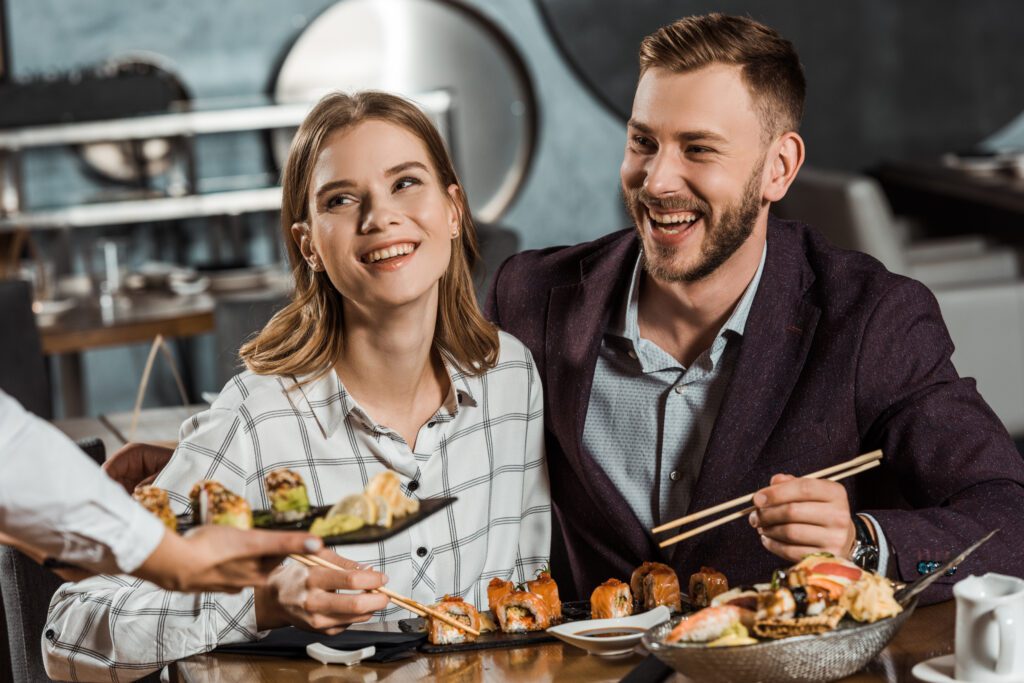
Kobe Offers Both Styles!
Ready to settle the score of teppanyaki vs hibachi for yourself? If your interest is peaked and you’re looking to find out which version of cooking you like better, then stop by Kobe Japanese Steakhouse! We offer family style teppanyaki and hibachi cooking all year round.
See if you prefer the entertainment value of the teppanyaki cooking or savor the smoky hibachi grilled food.
